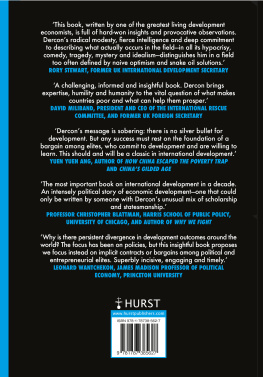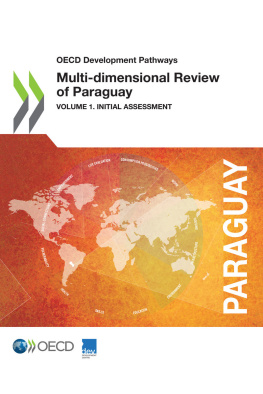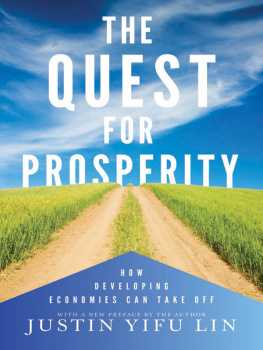ROUTLEDGE LIBRARY EDITIONS: THE ECONOMY OF THE MIDDLE EAST
Volume 15
THE ECONOMIES OF THE ARAB WORLD
THE ECONOMIES OF THE ARAB WORLD
Development Since 1945
YUSIF A. SAYIGH
First published 1978
This edition first published in 2015
by Routledge
2 Park Square, Milton Park, Abingdon, Oxon, OX14 4RN
and by Routledge
711 Third Avenue, New York, NY 10017
Routledge is an imprint of the Taylor & Francis Group, an informa business
1978 Yusif A. Sayigh
All rights reserved. No part of this book may be reprinted or reproduced or utilised in any form or by any electronic, mechanical, or other means, now known or hereafter invented, including photocopying and recording, or in any information storage or retrieval system, without permission in writing from the publishers.
Trademark notice: Product or corporate names may be trademarks or registered trademarks, and are used only for identification and explanation without intent to infringe.
British Library Cataloguing in Publication Data
A catalogue record for this book is available from the British Library
ISBN: 978-1-138-78710-0 (Set)
eISBN: 987-1-315-74408-7 (Set)
ISBN: 978-1-138-81004-4 (Volume 15)
eISBN: 978-1-315-74634-0 (Volume 15)
Publishers Note
The publisher has gone to great lengths to ensure the quality of this reprint but points out that some imperfections in the original copies may be apparent.
Disclaimer
The publisher has made every effort to trace copyright holders and would welcome correspondence from those they have been unable to trace.
THE ECONOMIES OF THE ARAB WORLD
DEVELOPMENT SINCE 1945
Yusif A. Sayigh
1978 Yusif A. Sayigh
Croom Helm Ltd, 210 St Johns Road, London SW11
British Library Cataloguing in Publication Data
Sayigh, Yusif Abdalla
The economies of the Arab world.
1. Economic development 2. Arab countries
Economic conditions
I. Title
330.9174927 HC498 77-3844
ISBN 0-85664-474-9
Printed in Great Britain by Biddles Ltd, Guildford, Surrey
CONTENTS
I would like to record my enormous debt to the Kuwait Fund for Arab Economic Development which gave me a generous grant to enable me to take long leave from the American University of Beirut, on whose faculty I served at the time, in order to undertake the research, travel, and writing called for by the two volumes of this study, and to finance the research and secretarial assistance required.* While my debt to the Board of Directors of the Fund is heavy, it is particularly so to Mr Abdul-Latif Al-Hamad, the Director-General of the Fund, for his appreciation of the importance of the study and his sympathetic understanding when the study took much longer to complete than originally planned.
It is to be stressed, in this connection, that the views and judgements made, and there are many, are mine. The Management of the Fund is not to blame for any of these. On the contrary, it is to be thanked for allowing me the freedom to express my views. I trust I have not abused of this privilege, but have used it responsibly, and hope that the Fund will not in any way have reason to regret either the award of the grant, or the liberty it accorded me in expressing myself, whether in the survey or analysis undertaken, in the judgements made, or in the conclusions reached.
The manuscript was read by some of the economists serving on the staff of the Fund. As a result, I have benefited from a number of comments and suggestions made. While expressing my gratitude to those who took the trouble to read the manuscript, I would like to extend my apologies for not accepting all the comments and suggestions offered. It may be an authors failing to resort to his own judgement in the final analysis, but this is at the same time a privilege that he enjoys.
It is my pleasure likewise to thank the very large number of persons in the twelve countries covered about 350 in all whom I interviewed for the study in the course of my field work, and who gave me the benefit of their wisdom and experience, and the many who supplied me with published reports, studies, and statistics of relevance to my research. To all of these, who must remain unnamed, I extend my gratitude and appreciation. I hope they will feel that I have made proper use of the help they accorded me, and that the study reflects their opinions correctly and responsibly.
Finally, I would like to record my warm thanks to Mrs Sana Najjar Izzeddin who alone typed and re-typed the very long manuscript, and organised the many tables, always with cheer, precision, and perfect cooperativeness. Without her the task would have been much more demanding and less manageable.
| Beirut, 31 January, 1977 | Y.A.S. |
*A companion volume to the present one appears simultaneously under the title The Determinants of Arab Economic Development.
This book is the product of two interests of which I became strongly aware in the late fifties, and which have become more intense and absorbing over the years. The first was an interest in the economic conditions and development of the Arab world after the close of World War Two, when, one after another, the Arab countries freed themselves of foreign domination. With the exception of Saudi Arabia and North Yemen, they had been under some form of Western colonial rule, but were now entering an exciting era of independence. The process of political liberation was completed between 1946 and 1962 for the countries that were at the centre of my attention, namely those lying between Iraq east and Morocco west. But it was to take another decade for the Arabian Gulf sheikhdoms (then formally known as the Trucial States) stretching south of Kuwait along the eastern coastline of the Arabian Peninsula down to Muscat-Oman, for the Aden colony and the rest of South Yemen, and for Mauritania and Somalia to join the Arab community of independent states while Palestine, which was taken over by the Zionists in 1948 and turned into the state of Israel has yet to be liberated and to join this community.
Though not comprising the whole Arab region, my focus was very wide, with the twelve countries falling within it constituting 82 per cent of the regions total area, 90 per cent of its aggregate population, and 90 per cent of its combined GNP. These twelve countries were Iraq, Kuwait, Saudi Arabia, Jordan, Syria, Lebanon, Egypt, Sudan, Libya, Tunisia, Algeria and Morocco moving from east to west. I was not aware in the late fifties, nor indeed now, of any work that examined economic conditions and development in these countries, let alone the other Arab countries, except for a small number of reference works. These consist mainly of: The Royal Institute of International Affairs The Middle East A Political and Economic Survey, Europas annual publication, The Middle East and North Africa









